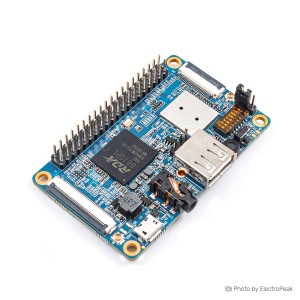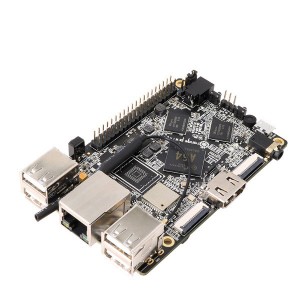Orange Pi boards feature varying specifications, including processors, RAM, storage options, and connectivity. Many models support multimedia applications, making them versatile for projects like media centers and IoT applications.
Orange Pi Boards
Orange Pi Boards
Orange Pi is a family of single-board computers (SBCs) that have gained popularity for their affordability and versatility in DIY projects. Developed by the Shenzhen Xunlong Software Co., Ltd., Orange Pi boards are similar to the well-known Raspberry Pi but offer a range of models with distinct features.
At its core, an Orange Pi serves as a compact computing platform equipped with a processor, RAM, storage options, and various ports for connectivity. The boards come in different iterations, each tailored to specific use cases. Common features include HDMI output, USB ports, Ethernet connectivity, and support for various operating systems, including Android and Linux distributions.
These SBCs find applications in diverse projects such as home automation, media centers, retro gaming consoles, and network-attached storage (NAS). The affordability of Orange Pi boards makes them an attractive choice for hobbyists and developers looking to experiment with embedded systems without breaking the bank.
Despite their lower price point, Orange Pi boards offer competitive performance, making them suitable for a variety of tasks. However, it's essential to choose the right model based on your project's requirements, as different Orange Pi versions come with varying specifications and capabilities.
In summary, Orange Pi provides an accessible and capable platform for enthusiasts and developers seeking cost-effective solutions for their DIY projects. As with any single-board computer, understanding the specific features of each Orange Pi model is crucial to ensure it aligns seamlessly with the intended application.
Price of Orange Pi Boards
The cost of Orange Pi boards varies depending on the model and its specifications. Generally more affordable than some other single-board computers, Orange Pi offers a range of options to cater to different budgets. Factors influencing the price include processing power, RAM capacity, onboard storage, and additional features. It's advisable to carefully assess your project requirements and choose an Orange Pi model that strikes the right balance between performance and cost.
Tips for Buying Orange Pi Boards:
Consider these key factors when purchasing an Orange Pi:
- OS Compatibility: Verify compatibility with your preferred operating system.
- Connectivity Options: Evaluate USB ports, HDMI, Ethernet, and wireless capabilities.
- Expansion and GPIO: Ensure sufficient pins for hardware connections.
- Accessory Availability: Confirm accessory availability for easy setup.
- User Reviews: Read user reviews for insights into real-world performance and challenges.
Famous of Orange Pi Models:
Orange Pi offers a variety of models, each designed to cater to different needs. Here are ten of the most common and popular Orange Pi models:
- Orange Pi Zero: A compact and affordable option with Wi-Fi and Ethernet connectivity, suitable for IoT projects.
- Orange Pi One: Features an Allwinner H3 quad-core processor and supports various operating systems, making it versatile for different applications.
- Orange Pi PC: Known for its robust performance with a quad-core CPU, this model is well-suited for projects requiring more processing power.
- Orange Pi Lite: Similar to Orange Pi One but comes with built-in Wi-Fi, making it convenient for wireless applications.
- Orange Pi PC 2: Features a quad-core processor and additional USB ports, providing enhanced connectivity options for various peripherals.
- Orange Pi Plus 2E: Offers expanded features, including more USB ports, onboard Wi-Fi, and Bluetooth, making it suitable for multimedia and networking projects.
- Orange Pi Prime: Designed with a powerful quad-core processor, this model is ideal for tasks requiring higher processing speeds and features HDMI and AV outputs.
- Orange Pi Win: Stands out with its Allwinner A64 quad-core processor and is equipped with HDMI, onboard Wi-Fi, and Bluetooth, making it suitable for media applications.
- Orange Pi 3: Features a powerful Allwinner H6 quad-core processor, supports 4K video playback, and comes with USB 3.0 ports for faster data transfer.
- Orange Pi 4: Among the most advanced models, it boasts a Rockchip RK3399 processor, multiple USB 3.0 ports, and supports 4K video playback, catering to high-performance computing needs.
- Orange Pi 5: Orange PI 5 8GB Rockchip RK3588S 8-Core 64 Bit Single Board Computer, Up to 2.4ghz and 8K Video Codec Support Development Board Run Orange Pi/Ubuntu
When choosing an Orange Pi model, consider your project requirements, such as processing power, connectivity options, and multimedia capabilities, to select the one that best aligns with your specific needs.
What are the key features of Orange Pi boards?
What operating systems are compatible with Orange Pi?
Orange Pi supports various operating systems, including Orange Pi OS, Android, Ubuntu, Debian, and Armbian. This flexibility allows users to choose an OS that best fits their project requirements.
Can Orange Pi boards be used for multimedia applications?
Yes, Orange Pi boards are suitable for multimedia applications. Many models come with HDMI ports and support high-definition video playback, making them ideal for media centers, home theaters, and other multimedia projects.
How do I power an Orange Pi board?
Orange Pi boards typically require a 5V power supply. The power input may vary between models, so it's essential to check the specifications of the specific Orange Pi board you're using.
What connectivity options are available on Orange Pi boards?
Orange Pi boards offer various connectivity options, including USB ports, Ethernet, Wi-Fi, HDMI, GPIO pins, and more. These options provide flexibility for connecting peripherals and accessories.
Is Orange Pi suitable for IoT projects?
Yes, Orange Pi is suitable for IoT projects. Its compact size, low power consumption, and GPIO pins make it a viable choice for building IoT devices and applications.
What programming languages can be used with Orange Pi?
Orange Pi supports a range of programming languages, including Python, C, C++, and Java. Users can choose the language that aligns with their coding preferences and project requirements.
Are there official accessories available for Orange Pi?
Yes, Orange Pi offers official accessories such as power supplies, cases, and expansion boards. These accessories are designed to enhance the functionality and usability of Orange Pi boards.
How does Orange Pi compare to Raspberry Pi in terms of performance?
Performance comparisons between Orange Pi and Raspberry Pi depend on the specific models. Some Orange Pi models may offer similar or better performance in certain aspects, while others may differ. It's advisable to check benchmark tests for accurate performance evaluations.
Is it possible to overclock Orange Pi for better performance?
Overclocking capabilities may vary among Orange Pi models. Users interested in overclocking should refer to the specific model's documentation and forums for guidance and potential risks.
Can Orange Pi run headless without a display?
Yes, Orange Pi can run headless without a display by accessing it remotely through SSH or other remote connection methods. This is particularly useful for projects where a physical display is unnecessary.

